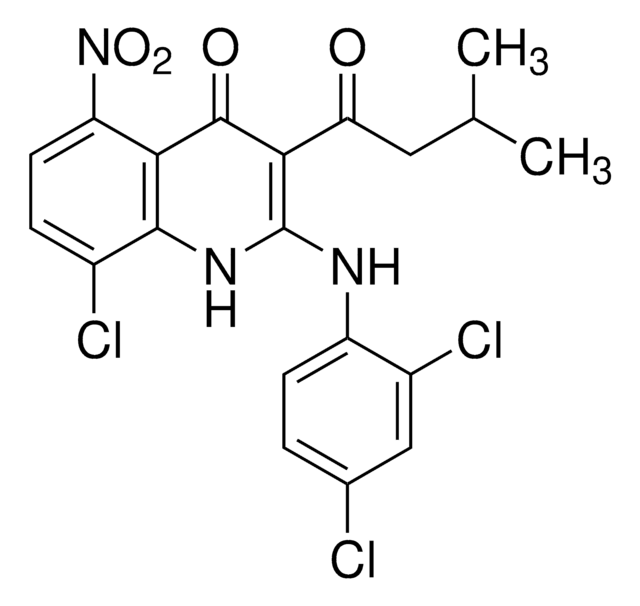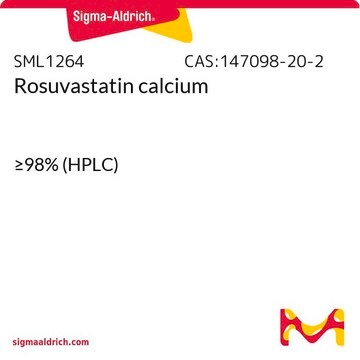475889
MK-886
A cell-permeable, orally active NSAID that blocks cellular Cox pathway PGE2 production by inhibiting COX-1 and mPGES-1, but not COX-2, activity, as well as suppresses cellular 5-LO pathway activation by inhibiting FLAP, rather than 5-LO, activity.
Synonym(s):
MK-886, 3-[1-( p-Chlorobenzyl)-5-(isopropyl)-3- t-butylthioindol-2-yl]-2,2-dimethylpropanoic Acid, Na, COX-1 Inhibitor III, FLAP Inhibitor I, MK886, mPGES-1 Inhibitor I
About This Item
Recommended Products
Quality Level
Assay
≥99% (TLC)
form
solid
potency
102 nM IC50
manufacturer/tradename
Calbiochem®
storage condition
OK to freeze
color
white
solubility
DMSO: 25 mg/mL
ethanol: 25 mg/mL
shipped in
ambient
storage temp.
10-30°C
InChI
1S/C27H34ClNO2S/c1-6-7-14-32-25-22-15-20(18(2)3)10-13-23(22)29(17-19-8-11-21(28)12-9-19)24(25)16-27(4,5)26(30)31/h8-13,15,18H,6-7,14,16-17H2,1-5H3,(H,30,31)
InChI key
VFMGWQLOCZBFCK-UHFFFAOYSA-N
General description
Biochem/physiol Actions
leukotreine biosybthesis
Warning
Other Notes
Koeberle, A., et al. 2008. J. Pharmacol. Exp. Ther.326, 975.
Fisher, L., et al. 2007. Br. J. Pharmacol.152, 471.
Ford-Hutchinson, A.W., et al. 1993. Can. J. Physiol. Pharmacol. 71, 806.
Ford-Hutchinson, A.W. 1991. Trends Pharmacol.12, 68.
Dixon, R.A., et al. 1990. Nature 343, 282.
Rouzer, C.A., et al. 1990. J. Biol. Chem.265, 1436.
Legal Information
Storage Class Code
11 - Combustible Solids
WGK
WGK 1
Flash Point(F)
Not applicable
Flash Point(C)
Not applicable
Regulatory Listings
Regulatory Listings are mainly provided for chemical products. Only limited information can be provided here for non-chemical products. No entry means none of the components are listed. It is the user’s obligation to ensure the safe and legal use of the product.
JAN Code
475889-MG:
475889-5MG:
Certificates of Analysis (COA)
Search for Certificates of Analysis (COA) by entering the products Lot/Batch Number. Lot and Batch Numbers can be found on a product’s label following the words ‘Lot’ or ‘Batch’.
Already Own This Product?
Find documentation for the products that you have recently purchased in the Document Library.
Customers Also Viewed
Our team of scientists has experience in all areas of research including Life Science, Material Science, Chemical Synthesis, Chromatography, Analytical and many others.
Contact Technical Service














